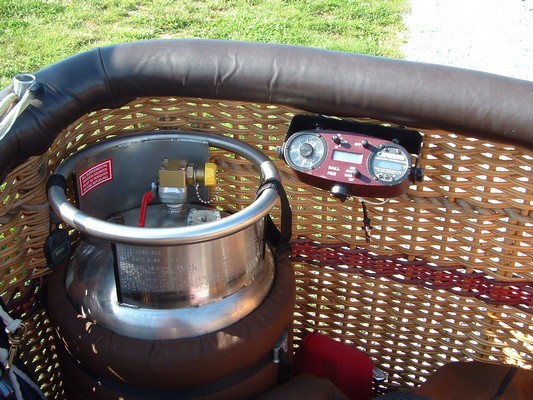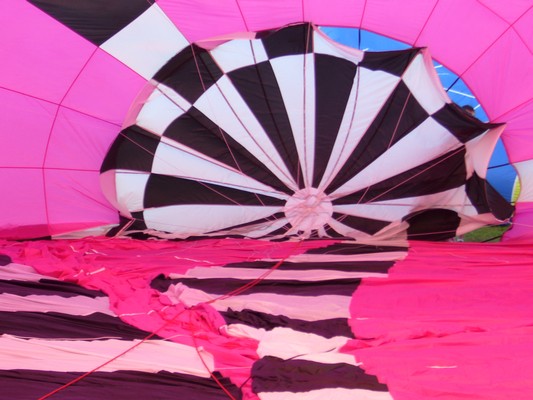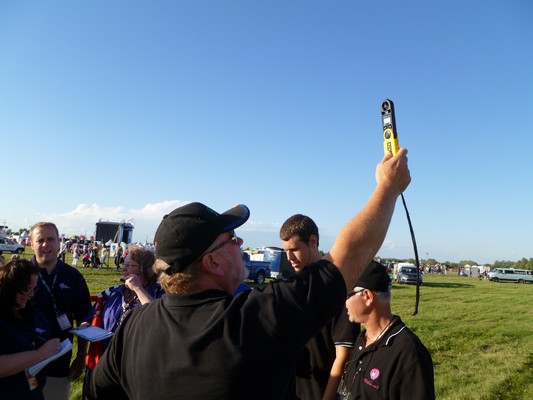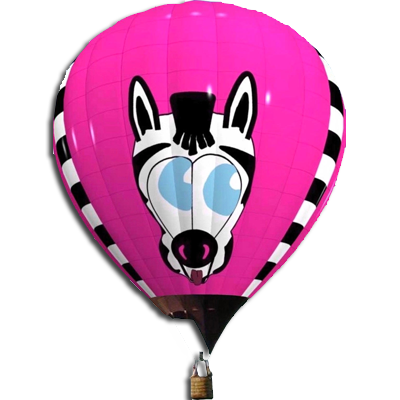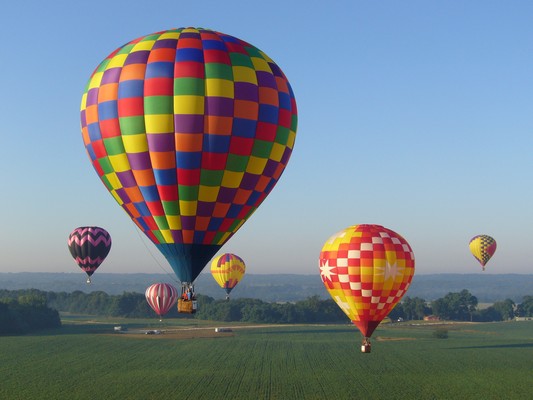
Let's start with some general questions about hot air ballooning:
When do we fly?
Balloons need stable, light winds in order to fly safely. Typically the winds are calmer and more predictable at sunrise and a couple hours before sunset.
What materials are used in building hot air balloons?
The fabric portion is called the "envelope". Most envelopes are made from rip-stop nylon or polyester, usually with a coating on the inside to help hold in air. It is light-weight and strong, but will tear or snag if not treated with caution. Baskets are usually made from wicker.
Is crewing a balloon hard work?
With proper planning and training, most crewing is not too hard. Most people in reasonably good health can crew with ease.
What type of fuel is used in hot air balloons?
Balloons use the same propane used in gas grills. However, balloons use propane in liquid form to generate significantly more energy. A gas grill may generate 30,000 BTUs where a hot air burner can use 16 million BTUs.
How windy is too windy?
Whether to fly or not fly depends on geographic location, time of year, availability of large landing spots, and pilot experience. Most pilots prefer to fly with surface winds under 8 miles per hour.
Is a license required to fly a balloon?
Hot air balloons are certified aircraft just like airplanes. The Federal Aviation Administration governs ballooning using the same rules as other aircraft. Pilots must be trained and tested before receiving a pilot certificate.
What do balloons cost? Is this an expensive sport?
Balloons are lot like cars regarding cost. New ones can cost $50,000 but used ones are available for $10,000. There are maintenance costs, fuel, and supplies, and the cost of operating a retrieve vehicle. But most balloonists find ballooning to be affordable.
How long do you fly, and how far do you go?
Most sport flights last 45 minutes to an hour, depending on weather and landing conditions. Distance traveled depends on how fast the wind is blowing. Usually flights are 5-10 miles.
Is it cold up there?
Generally the air is colder the higher you fly, but balloonists often fly under a couple thousand feet. The temperature might be 5-10 degrees different than the surface, and sometimes is even warmer.
How do you steer the balloon?
The only way the pilot can change direction is to change altitude. Winds often blow at slightly different headings at different heights, so a pilot uses these (generally) slight changes to fly to a specific location.
